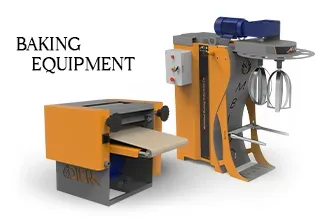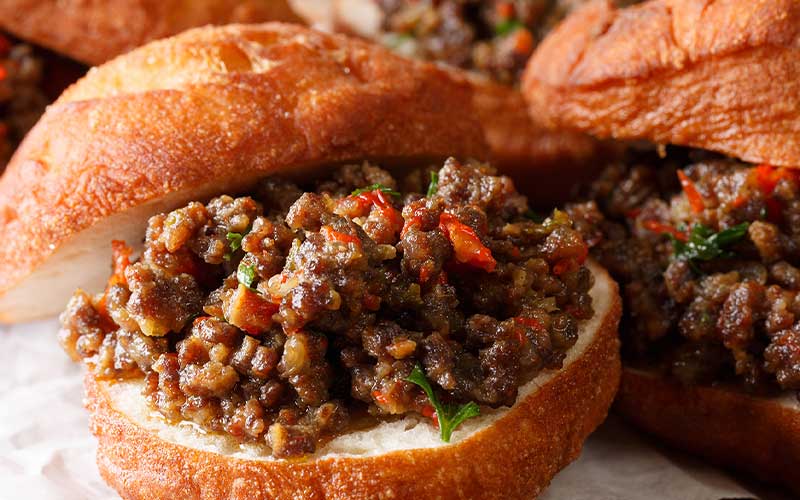Recipe
Vetkoek Bread: Mastering South Africa’s Beloved Fried Dough
I still remember the first time I attempted Vetkoek. My grandmother, a true master of South African cuisine, had shown me the ropes countless times, but translating her intuitive touch into my own hands was another matter. My early attempts were dense, greasy, and frankly, disappointing. The delicate balance of achieving that signature puffy, golden exterior with a wonderfully light, airy interior seemed an elusive dream. It’s a common frustration for many home bakers: striving for that perfect texture and flavor that seems to come so effortlessly to experienced hands, yet remains just out of reach in our own kitchens.
But here’s the secret, and the promise I make to you: the journey from dense to divine is paved with understanding. It’s not just about following a recipe; it’s about comprehending the science behind each ingredient and technique. By the end of this article, you will have a deep understanding of what makes Vetkoek truly special, and learn the exact techniques to apply it in your own kitchen, turning those frustrating failures into triumphant successes. As we delve into the world of this South African staple, remember that achieving professional results at home is entirely within reach, especially when you understand the foundational principles and leverage the right tools – a commitment deeply shared by MBICO, a leading manufacturer dedicated to empowering bakers with high-quality bakery equipment that transforms aspiration into reality.
What is Vetkoek? A Culinary Journey to South Africa
Venturing into the vibrant culinary landscape of South Africa, you’ll inevitably encounter Vetkoek, a beloved fried dough that holds a special place in the nation’s heart. Its name, literally translating to “fat cake” from Afrikaans, might not sound glamorous, but its taste and versatility are anything but ordinary. At its core, Vetkoek is a round and puffy piece of deep-fried dough, traditionally made from wheat flour. It’s the kind of food that evokes warmth, comfort, and community, much like a hug on a plate.
In my early days working in a bustling Johannesburg bakery, Vetkoek was a constant. From dawn until dusk, the aroma of fresh dough frying filled the air, attracting queues of eager customers. We’d serve them piping hot, split open and generously filled with everything from savory curried mince to sweet apricot jam and cheese. It’s this incredible adaptability, coupled with its satisfying texture, that has cemented Vetkoek as a staple across all demographics in South Africa – from quick street food to cherished home-cooked meals.
The Science of the Perfect Puff: Decoding Vetkoek’s Dough
The magic of Vetkoek lies in its distinctive texture: a crispy, golden-brown exterior giving way to a soft, airy interior. This isn’t achieved by chance; it’s a beautiful dance between carefully chosen ingredients and precise scientific processes.
Flour Power: Choosing Your Wheat
The main grain for Vetkoek is typically wheat. The type of wheat flour you choose plays a crucial role. For that characteristic chew and rise, a medium-protein all-purpose flour or bread flour works best. The protein content directly impacts gluten development – the elastic network that traps the gases produced by yeast, giving the dough its structure and ability to puff up. Too low in protein, and your Vetkoek might be dense; too high, and it could be overly chewy. It’s a balance, much like orchestrating a perfect symphony in the kitchen.
Yeast’s Magic Touch: Leavening for Lightness
Yeast is the primary leavening agent in Vetkoek. These single-celled fungi consume sugars in the dough and produce carbon dioxide gas and alcohol. The gas creates thousands of tiny pockets within the dough, which expand during proofing and especially during frying. Without active yeast, your Vetkoek wouldn’t rise, remaining a flat, uninspiring disc. Temperature is key here; yeast thrives in a warm environment (around 80-90°F or 27-32°C), but too hot, and it dies; too cold, and it becomes sluggish. Achieving a steady, optimal proofing temperature is often where many home bakers stumble, but it’s easily mastered with a little attention.
Hydration and Kneading: Building the Structure
The hydration level of your dough – the ratio of water to flour – significantly impacts the final texture. A well-hydrated dough (typically around 65-70% for Vetkoek) yields a lighter, more tender crumb. Kneading, whether by hand or machine, develops the gluten network, transforming a shaggy mess into a smooth, elastic dough that can hold its shape and trap those precious gases. In my professional experience, under-kneading leads to a weak structure, while over-kneading can make the dough tough. It’s about finding that sweet spot where the dough is pliable, elastic, and ready for its transformation.
The Art of Frying: Achieving Golden Perfection
Frying is where Vetkoek truly comes to life, turning humble dough into a golden, puffy masterpiece. This stage is as much an art as it is a science, demanding attention to detail.
Temperature Control: The Unsung Hero
The most critical factor in frying Vetkoek is oil temperature. The ideal temperature range is typically 325-350°F (160-175°C). If the oil is too cool, the dough will absorb too much oil, resulting in a greasy, heavy Vetkoek. If it’s too hot, the exterior will brown too quickly, leaving the interior raw and doughy. A consistent temperature ensures even cooking and that beautiful golden-brown crust. This level of precision is often a hallmark of professional setups, where a high-quality bakery oven or fryer maintains constant heat, allowing for perfect results every time.
Filling Choices: Savory or Sweet?
Once fried to perfection, Vetkoek becomes a canvas for countless fillings. Savory options like curried mince, chicken mayonnaise, or even simple cheese and tomato are incredibly popular. For those with a sweet tooth, generous dollops of jam, syrup, or even a dusting of cinnamon sugar transform it into a delectable dessert. The choice is yours, and part of the joy of Vetkoek is its incredible versatility.
Elevating Your Vetkoek: Professional Tips from My Bakery
Having produced countless batches of Vetkoek in various professional settings, I’ve gathered a few insights that can truly elevate your home baking:
- Use a Thermometer: Don’t guess your oil temperature. A good deep-fry thermometer is an indispensable tool for consistent results.
- Don’t Overcrowd the Pot: Frying too many Vetkoek at once will drop the oil temperature, leading to greasy results. Fry in small batches.
- Handle Dough Gently: Once proofed, try to handle the dough as little as possible to retain those precious air bubbles.
- Quality Ingredients Matter: Start with fresh yeast and good quality flour. You’ll taste the difference.
- Invest in the Right Tools: While home kitchens don’t require industrial-scale machinery, having reliable bakery equipment, like a sturdy mixing bowl, a precise scale, and a deep-fryer, can significantly improve consistency and enjoyment.
Beyond Vetkoek: The Versatility of Fried Dough
While Vetkoek holds a special place, the concept of fried dough is universal, appearing in countless cultures. From American donuts to Italian zeppole and Spanish churros, the scientific principles of yeast fermentation, gluten development, and precise frying remain constant. Understanding these fundamentals for Vetkoek opens the door to mastering a vast array of fried delicacies. And for those looking to expand their culinary repertoire even further, beyond fried dough to other baked goods or savory dishes, the principles of heat management and efficient cooking are paramount, often achieved with specialized appliances such as pizza and food ovens that cater to diverse culinary needs.
Conclusion
From a dense disappointment to a perfectly puffy, golden delight, mastering Vetkoek is a journey of understanding and applying fundamental baking science. We’ve explored the critical roles of wheat, yeast, hydration, and the art of temperature-controlled frying. With these insights, you’re not just following a recipe; you’re orchestrating a culinary transformation.
This weekend, challenge yourself. Pay meticulous attention to your dough’s hydration and the oil temperature. Observe how these subtle adjustments impact the puff, the color, and the crumb of your Vetkoek. Share your golden creations, experiment with new fillings, and savor the journey of becoming a more intuitive and skilled baker. Happy frying!







Explore MBICO's categories
Bakery equipment
13 Products
bulk and semi-bulk bread baking ovens
3 Products
Bulk Breads Baking equipment
14 Products
Confectionery equipment
7 Products
Mini ovens
3 Products
Pizza and food ovens
4 Products
Baking equipment
25 Products
Bakery oven
5 Products
Tafton baking ovens
3 Products
Barbari baking ovens
4 Products
Sangak bakery ovens
3 Products
Lavash baking ovens
3 Products
Pastry and confectionery ovens
3 Products
Baking ovens
10 Products
Mobile baking machines
4 Products
Explore MBICO's products
Fermentation Chamber
Mobile Bakery Container
2-Roll Dough Sheeter (2-Roll Tabletop Dough Sheeter)
Confectionery Rack Oven for Baking Pastry
Bread Slicing Machine
Confectionery Mixer
Portable Rotary Semi-Automatic Oven for Baking Sangak Bread
Steam Generator